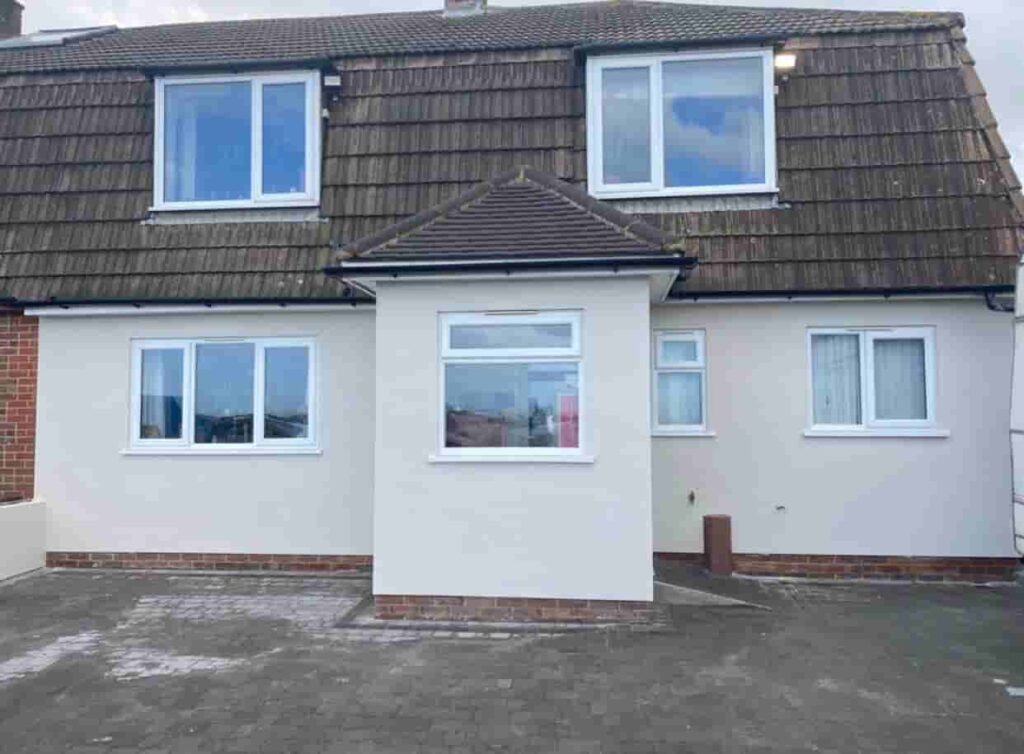The Role of Underlayment in Gable Roof Repair
Introduction: A well-maintained roof protects your home from the elements. When it comes to gable roofs, ensuring proper repairs and maintenance is crucial for preserving the structural integrity of your property. One often overlooked but vital component in gable roof repair is underlayment. In this blog post, we’ll explore the significant role of underlayment in gable roof repair and why it’s essential for the long-term health of your roof.
Understanding Gable Roofs
Gable roofs, characterised by their triangular shape, are popular for many homes due to their aesthetic appeal and efficient rainwater drainage. However, they are also prone to specific issues, such as leaks and damage caused by wind-driven rain. This is where underlayment becomes essential.
The Role of Underlayment
Underlayment is a protective layer between the roof decking and the final roofing material, such as shingles or metal panels. It serves several critical functions in gable roof repair:
- Water Barrier: Underlayment acts as a secondary water-resistant barrier, preventing water from infiltrating the roof structure and causing damage.
- Moisture Control: It helps manage moisture and condensation within the roof, reducing the risk of mould and rot.
- Wind Resistance: Underlayment enhances the roof’s resistance to wind-driven rain, particularly important for gable roofs susceptible to leaks during storms.
- Additional Protection: Underlayment provides temporary protection until repairs can be made in cases of damaged or missing roofing materials.
Types of Underlayment
There are several types of underlayment materials available, with the most common options being:
- Asphalt-saturated Felt: Also known as felt paper or tar paper, this traditional underlayment provides good water resistance and is cost-effective.
- Synthetic Underlayment: These newer materials offer improved durability, moisture resistance, and enhanced UV protection compared to traditional felt.
- Rubberised Asphalt: This self-adhering underlayment provides excellent water resistance and seals around fasteners, reducing the risk of leaks.
Choosing the right underlayment for your gable roof repair will depend on factors like your local climate, budget, and the roofing material you plan to use.
The Gable Roof Repair Process
In gable roof repair, underlayment plays a crucial role:
- Inspection: Inspect your gable roof for damage, leaks, or missing shingles or roofing material.
- Repair Roof Decking: If you discover any damaged or rotted decking, replace it as necessary to ensure a solid foundation for the underlayment.
- Underlayment Installation: Roll out and install the chosen underlayment material according to manufacturer guidelines. Overlap seams and secure it to the roof deck.
- Roofing Material Installation: Once the underlayment is in place, you can install your chosen roofing material, such as shingles or metal panels.
Conclusion: In gable roof repair, underlayment is an essential component that provides an additional layer of protection against water infiltration, wind-driven rain, and moisture-related issues. Properly installing the right underlayment material can extend your roof’s lifespan and help maintain your home’s integrity. When undertaking gable roof repair, don’t overlook the crucial role of underlayment in keeping your property safe, dry, and well-protected from the elements. If unsure about the repair process, consider consulting a professional roofing contractor for expert guidance and assistance.
Call us on: 01302 430 895
Click here to find out more about SM Roofing Hatfield
Click here to complete our contact form and see how we can help with your roofing needs.

